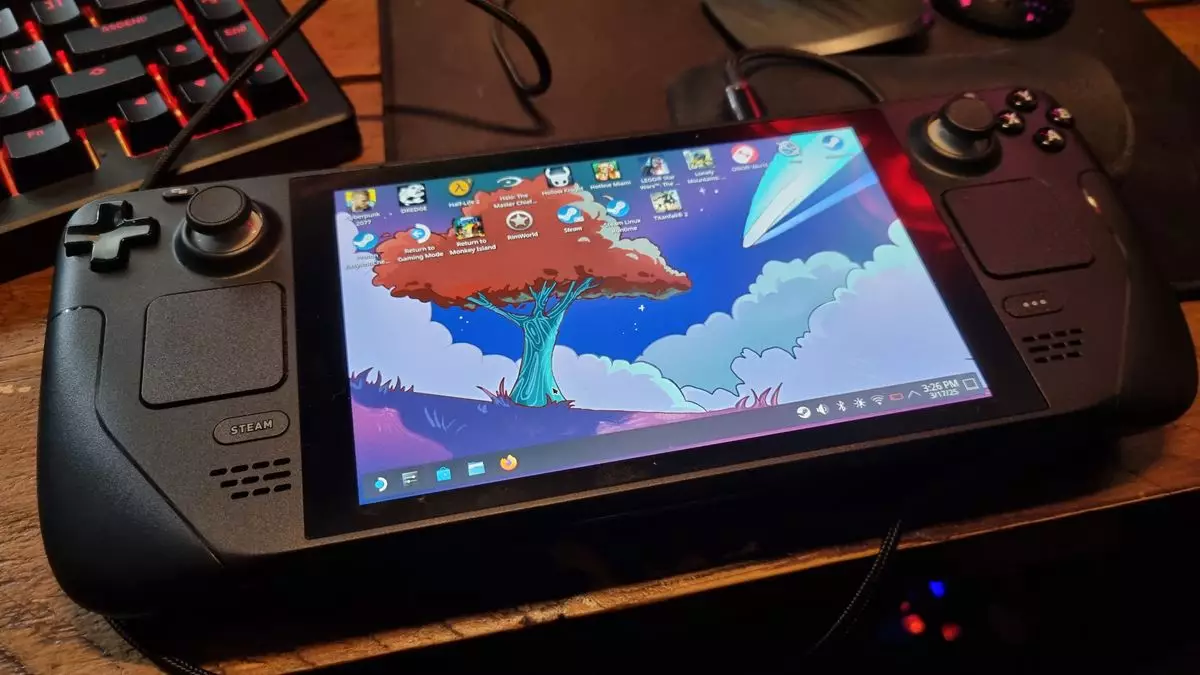When Valve introduced SteamOS with the Steam Deck, a revolution in the gaming landscape was set in motion. Since its launch in 2022, SteamOS has carved out a niche for itself in the burgeoning handheld gaming sector. Yet, it has largely been associated with the Steam Deck and remained relatively untested on other devices until now. The impending release of the Lenovo Legion Go S could be the pivotal point that transforms the operating system from a singular focus into a multi-device powerhouse. With SteamOS 3.7.0 Preview, Valve appears to be laying the groundwork for a broader deployment, signaling an ambitious move forward.
The version 3.7.0 update, titled the “Pi Day update,” marks an essential step in this evolution. Within the Preview channel, Valve has hinted at an array of enhancements and a significant milestone: supporting non-Steam Deck handhelds. This progression opens the door for future devices, enhancing SteamOS’s position as a flexible platform tailored for mobile gaming.
Exciting New Features and Upgrades
Among the standout features of the SteamOS 3.7.0 update is the integration of Plasma 6.2.5 into the desktop mode for the Steam Deck. This upgrade not only refines the aesthetics but also enhances functionality. Floating panels, a reorganized settings menu, and the return of the iconic cube effect are reminiscent of the bygone golden age of computing while delivering a modern twist. This brings not just visual appeal but improved navigational efficiency, making it a delight for users.
However, while these upgrades sound impressive on paper, they come with the caveat of being a Preview update. Early adopters may find themselves grappling with bugs and issues, such as errant power button behavior or unexpected hangs. These inconveniences, while frustrating, are inherent in the process of refining software, particularly in a landscape as vibrant and chaotic as gaming.
Broadening Compatibility: A Game Changer for Handhelds
One of the key attractions of SteamOS has been its seamless integration with Steam’s ecosystem. The potential support for the Lenovo Legion Go S shines a light on Valve’s intent to enhance compatibility across multiple devices, effectively making SteamOS not just a singular entity but a platform for various handheld gaming experiences. This strategic expansion suggests that Valve is gearing up to give competitors like Windows 11 a run for their money in the handheld domain.
Many existing handheld devices currently leverage alternative operating systems that may lack the cohesive experience offered by SteamOS. Devices running alternative interfaces often come with their own launchers, which can complicate the gaming experience. In contrast, SteamOS’s direct access to Steam’s library ensures a streamlined experience, eliminating hurdles and making game management a breeze. Gamers thrive on efficiency, and this is where Valve could outshine competitors navigating their fragmented ecosystems.
Are We Too Late to the Party?
Despite these exciting developments, one question looms large: is Valve entering the non-Steam Deck market too late? As handheld gaming PCs have flooded the market with various operating systems and interfaces, many users have become accustomed to alternatives that, while not as integrated as SteamOS, serve their needs adequately. The risk for Valve lies in their timing—retrofits may not entice gamers already settled into their routines.
Yet while it’s easy to criticize the pacing of Valve’s releases, the arrival of SteamOS on non-Deviant models can still be viewed as the injection of fresh blood into the space. As fans of handheld gaming look for new experiences, the integration of SteamOS into more devices could become a competitive edge, harnessing the long-standing loyalty of the gaming community.
Ultimately, while there is a risk of being late to the market, the unique features and seamless gaming experience that SteamOS offers may prove to be catalysts that attract new users and convert skeptics. As Valve continues to innovate and refine, fans wait in anticipation to see how this saga of handheld evolution unfolds.

